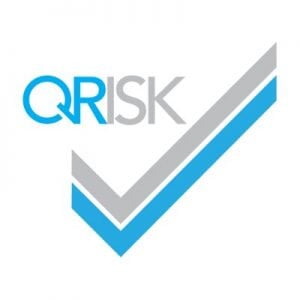GP Tools is proud to present a specially curated list of free to access for anyone online lectures. We believe that learning and education should be free and this is the basis of our mission ethos. We are adding new content every week and if there is something that you think would benefit others then please let us know so we can add it. Visit the cpd link at the top of the page or click http://212.111.40.106/cpd/
News

Why GP Tools will never upsell
Wikipedia defines Upselling as a sales technique whereby a seller induces the customer to purchase more expensive items, upgrades or other add-ons in an attempt to make a more profitable sale.
We believe that the whole revalidation industry that has sprouted out of nowhere is at its core built on upselling. If it were up us at GP Tools, we would provide this toolkit completely free to our users. Unfortunately, in the post-truth world that we live in, offering something for free implies a catch somewhere down the road or some other negative connotation.
Which is why we are not surprised when we receive emails from Doctors’ who have been somehow maneuvered into buying unnecessary add-ons from other toolkit providers.
Our company ethos at it’s most basic level prevents us from engaging in predatory business practices such as upselling. Nowhere on the site will you ever be bombarded with messages forcing you to take out a learning module subscription, nor will we ever email you anything similar.

QRISK3 vs QRISK2 – what’s changed
QRISK has been used in the general practice setting since 2007. It was upgraded to QRISK2. It is a 10 year cardiovascular risk tool. There is a proposal to upgrade to a newer version of the algorithm called QRISK3. This has been outlined in a recent paper published by Julia Hippisley-Cox, professor of clinical epidemiology and general practice1,Carol Coupland, professor of medical statistics in primary care and Peter Brindle, evaluation and implementation theme lead, NIHR CLAHRC West. The paper was published in the 23rd May 2017 issue of the BMJ. BMJ 2017; 357 doi: https://doi.org/10.1136/bmj.j2099
Currently QRISK 2 includes the ages of 25 to 84 and includes
- Ethnicity
- Deprivation (the Townsend score)
- Systolic blood pressure
- BMI
- Total cholesterol/HDL ratio
- Smoking
- Family history of coronary artery disease in a first-degree relative aged less than 60
- Type I diabetes
- Type II diabetes
- Treated hypertension
- Rheumatoid arthritis
- Atrial fibrillation
- Chronic kidney disease (stage 4 or 5)
QRISK 3 will include the following additional factors:
- Chronic kidney disease (stage 3, 4, or 5)
- Systolic blood pressure variabilit
- Migraine
- Corticosteroid use
- Systemic lupus erythematosus
- Atypical psychotics
- Severe mental illness,
- Erectile dysfunction in men
- HIV/AIDS.
Overall the calculator performed as the previous version. The new added risk factors were found to increase risk by about 10%, the only exception being HIV/AIDS.
You can use the new risk calculator here: https://qrisk.org/three/

2017/18 QOF update – Moderate to Severe Frailty
The new 2017/18 Qof with the frailty index does away with the bureaucratic unplanned admissions direct enhanced service and replaces it with indentifying and managing the over 65s with moderate to severe frailty.
What is the electronic frailty index (eFI)?
The electronic Frailty Index (eFI), which has been developed by the University of Leeds, TPP (System One), Bradford Teaching Hospitals NHS Foundation Trust, Bradford University and Birmingham University, is an evidence based criteria for identifying frail patients.
It is based upon 36 deficits comprising 2000 Read codes . The score is strongly predictive of adverse outcomes and has been validated in large international studies.
The eFI score is out of 36. For example if 9 deficits are present then the socre will be (9/36) or 0.25. In this way the following frailty categories can be defined:
| eFI Score | Category |
|---|---|
| 0 – 0.12 | Fit |
| 0.13 – 0.24 | Mild Frailty |
| 0.25 – 0.36 | Moderate Frailty |
| > 0.36 | Severe Frailty |
How to get the eFI score and the list of moderately and severely frail patients?
What your practice needs to do:
For those patients identified as living with severe frailty, practices should provide a clinical review, which should include an annual medication review and, where appropriate, discuss whether the patient has fallen in the last 12 months. Any other clinically-relevant intervention should also be provided. In addition, where a patient does not already have an enriched Summary Care Record (SCR) the practice will promote this seeking informed patient consent to activate the enriched SCR.

